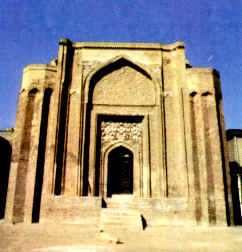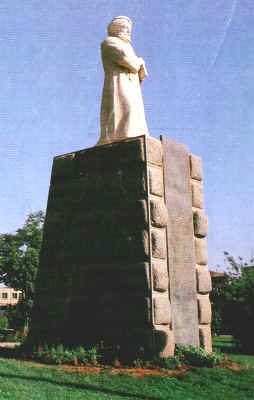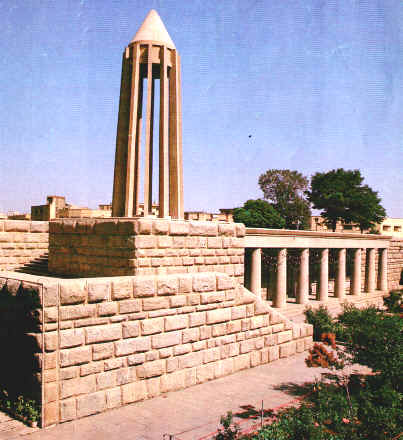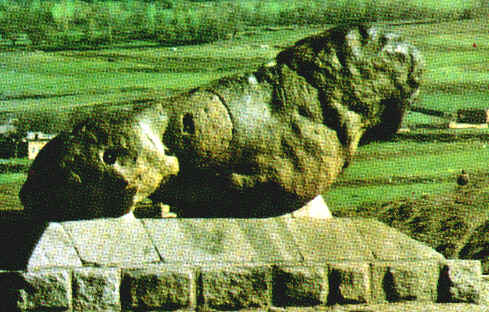
|
Alavian Dome 
Bazaar Hamadan Bazaar is sprawling affair, which extends across several streets. Fruit bazaar displays the region's famous produce and pottery and leather sections. Visitors are likely to find Hamadan's thick carpets an added attraction to leisurely stroll through the bazaar. Hamadan: Ancient City Modern Hamadan is sitting on top of the ancient city of Medes and Achaemenian, so there is no hope of taking romantic trip back to "Hagmatana" or "Ecbatana", as it was known to Greeks. There is some minor excavation on mounds in North Hamadan and only hints of the Herculean task, required to dig under parts of the city for the near legendary remains of Hagmatana. Most of the principle archeological and historical sites are post-Islamic; that is, at most 1300 years old. Only three, Eshter's Tomb, Ganj-Nameh and Stone Lion go beyond 1500 years. 155 km before Hamadan, is Kharaqan, 33 km west of Abeh Garm, itself 75 km from Takestan, a road leads to two 1000 year old Seljuk Tomb-Towers, which are among the finest decorated brick structures in Iran. 90 km before Hamadan, at Darjazin, are two 14th century Tomb-Towers (just East of Razan village), 66 km from Abeh Garm. In Hamadan, pleasant city of amiable and friendly people, there are many monuments and places of interest. Mausoleum of Avicenna Recent monument to a very ancient name, Mausoleum of Avicenna consists of conical roof, supported by twelve concrete columns. The terrace allows good view of the city. There is also museum containing manuscripts and books. "Avicenna" is the "Prince of Philosophers" by Western appellation and Iranian know him as "Abu Ali Sina", name used for several landmarks in the city. Lying with Abu Ali Sina in the same mausoleum is the body of his Hamadanian host, the mystic poet, Sheikh Abu Said. 

Mausoleum of Baba Taher This is another recent rocket-like monument to mystic contemporary of Avecinna, Baba Taher, died in 1019 AD. At least, as interesting as the monument are, the magnificent flowers and winding paths that surround it at the center of a rather large square. 
Stone Lion It is called "Shireh Sangi" in Persian. Early predecessors used it to decorate one of Hamadan city's gates. Long thought to have been 2000-year-old Parthian relic, it is now more definitely believed to be the handiwork of Alexander's craftsmen, possibly to commemorate one of the Macedonian's fallen generals, Hephaestion. The lion is badly mutilated by 10th century ruler's effort to remove it. 
|
© Copyright Caroun.com. All rights reserved.